
Our household’s High Quality Goetta supply was once again running short; so I went looking for more $1 a pound bone-in pork shoulder butts to make freezer stored Goetta with. The best deal found was $1.49 per pound for closely trimmed, boneless butts. However, that deal was one of the previous week’s sale items at Aldi and only one 7.13 pound butt was left in the store. I purchased that single boneless butt then headed to Kroger to see what other meat could be found. Bone-in butts were offered at the next store, but at a much higher price. I did however find a comparatively low beef price on Choice whole vacuum packaged briskets @ $3 per pound. I picked the leanest brisket in the self-service coffin meat case then headed home to fabricate lean meat cubes. 18.04 total pounds of vacuum packaged pork and beef yielded 14.88 pounds of lean cubes. A total of $43.24 was paid for starting meat. $43.24 divided by 14.88 pounds of lean, raw clean lean ended up costing $2.91 per pound. Conversely, when I’m able to find 99 cents per pound, retail trimmed, bone-in pork butts, the lean cubed meat cost normally comes in around $1.18 per pound. That’s why I’m often on the lookout for 99 cents a pound pork shoulder butts. Still, there’s another major factor involved with what amount of purchased meat most folks actually eat; it’s called cooking shrinkage. Cooking shrinkage is not an added cost factor in Goetta production because all meat cooking purge (broth) is used to hydrate steel-cut oats, and is therefore eaten
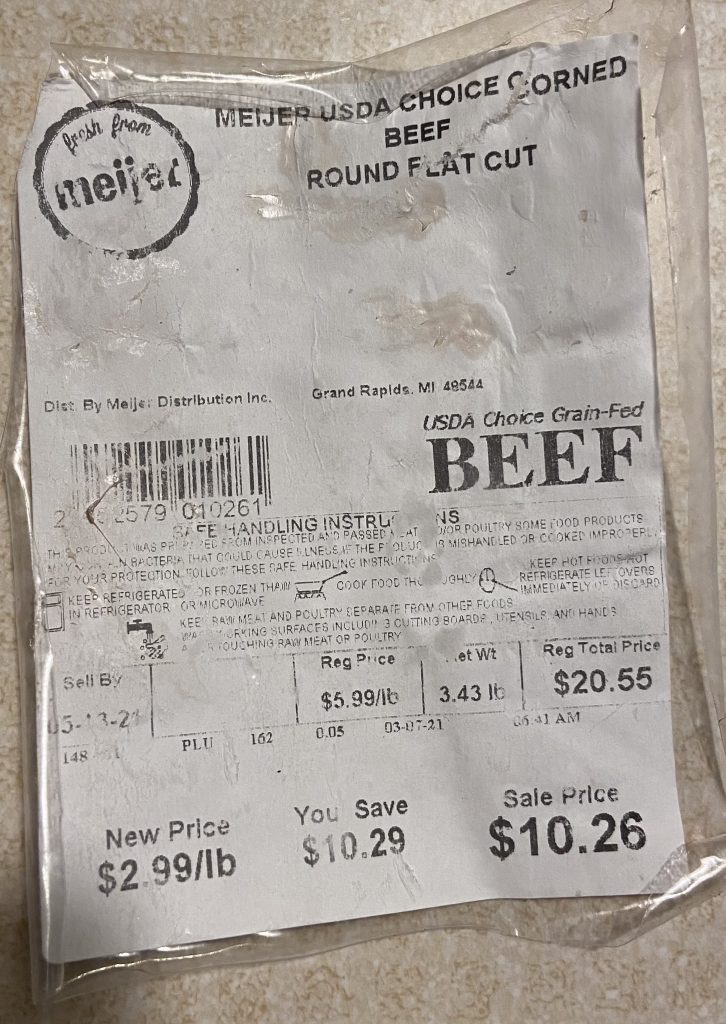
For an enlightening example of how much cooking shrinkage can affect what is actually eaten, I purchased a wet-packed corned beef flat cut brisket. The label shown here reads “Beef Round Flat Cut,” but in reality it was a trimmed and brine pumped flat cut brisket. Apparently some supermarket Meat Department employees don’t know their meat cuts all that well. At one time I worked in a wet-pack corned beef plant; so I know all too well about how lucrative it is to pump 35% brine into raw meat then sell it. The only drawback to selling raw, wet-packaged corned beef is that it is a seasonal item that’s predominately purchased around Saint Patrick’s day. Raw corned beef is not a convenience product; so overall consumer demand is relatively low the rest of the year. There’s no way that I would ever purchase wet-pack raw corned beef at it’s label listed regular price of $5.99 per raw pound. As demonstrated below, buying it at even $2.99 per raw pound is plenty expensive. After cooking and cooked fat layer removal, the 3.43 pounds of raw brine pumped corned beef yielded just 1.45 pounds of cooked corned beef for eating. There was a 1.98 pounds of combined cooking shrink and cooked fat trimming loss. 1.45 pounds of eaten corned beef divided by 3.43 pounds of starting raw, equals a 42% yield. $10.26 divided by the 1.45 pounds works out to be $7.08 per pound of consumed corned beef. Lesson to be learned: selling moisture, that will be lost during coking, makes much more financial sense than buying such moisture. Also, sell as much fat a consumers will accept.
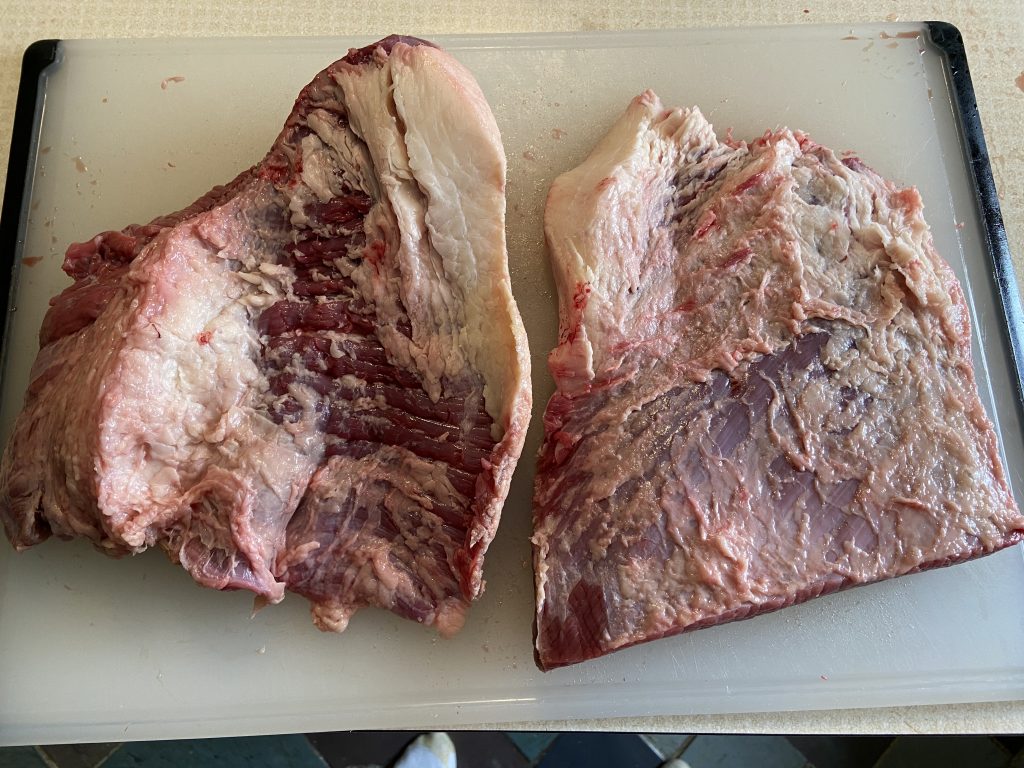
A whole vacuum packaged “packer brisket” contains about 1/3 combined subcutaneous & muscle seam fat. Briskets are made up of 2 different muscles: the flat and point. Pictured above, the whole packer brisket is seamed into the 2 different sections. I find that seam separation is the easiest way to closely trim briskets to fabricate beef cubes. Sale priced Choice boneless chuck roasts can also be a prudent beef cut pick for Goetta production. In either case, sharp knives and basic knife skills will make dicing meat much easier. A 3/4 inch hole-size grinder plate could be used to create diced-like lean, but equipment costs and cleanup labor are not cost effective for such a small amount of meat.
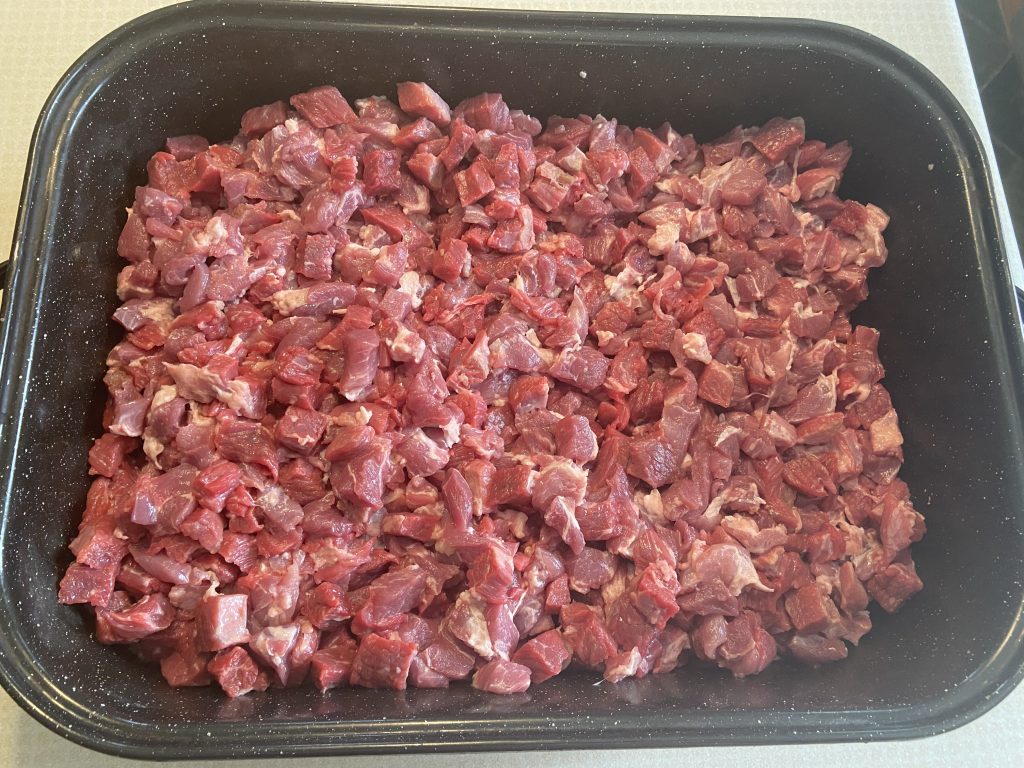
14.88 pounds of diced pork and beef. I used most of my standard Goetta recipe ingredients, but included curing salt #1, erythorbate cure accelerator and left out sodium phosphate. Sodium nitrite supplies characteristic cured meat color & flavor; plus inhibits fat oxidation. Cure accelerator enhances the reduction of nitrite to nitric oxide; thereby reducing end-product residual nitrite. And, of course cure accelerator also increases the speed of meat curing; decreasing GMP (Good Manufacturing Practice) production time. Sodium phosphate was not needed in this batch because the oats in Goetta retain plenty of finished product moisture on their own, oats also sufficiently bind the cooked & chilled loaf and when nitrite is used there is no need for second fat oxidation inhibitor. The widely accepted amount of sodium nitrite is 1 level teaspoon for every 5 pounds of meat. So, for 14.88 pounds of starting raw meat, I used just under 3 teaspoons of curing-salt #1. Cure accelerator is used a a rate of 1/8 of the amount of cure. So, .37 of a teaspoon of sodium erythorbate was used in the batch.
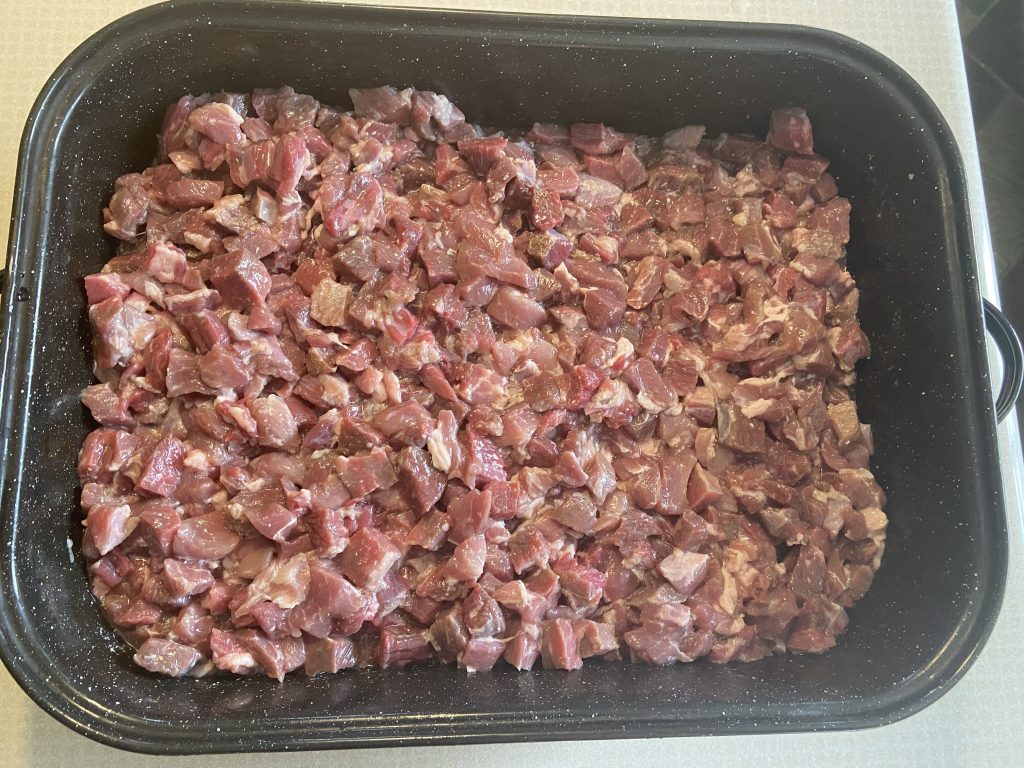
Stirring in cure containing water, then cure accelerator water, almost immediately starts turning the meat brownish in color.

The metmyoglobin brown coloration is very evident in this picture. Upon heating, Metmyoglobin converts to the characteristic heat stable nitrosylhemochrome cured meat coloration.
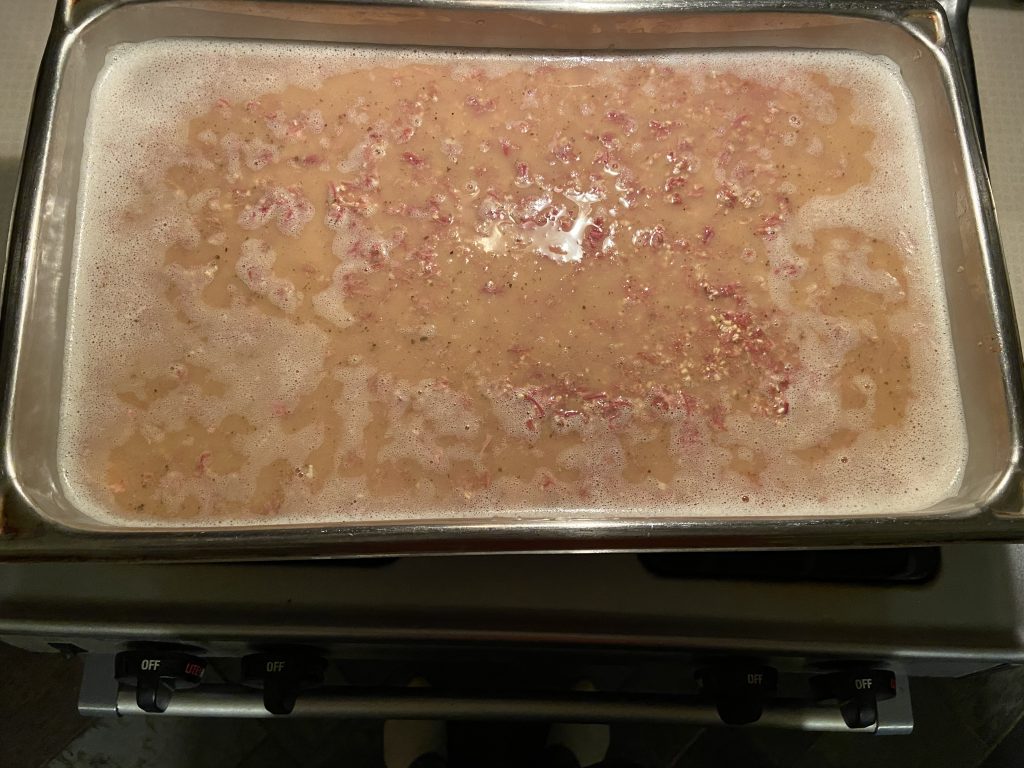
After the meat was cooked tender and mashed into shreds oats were full hydrated and uniformly stirred in with the remainder of the batch.
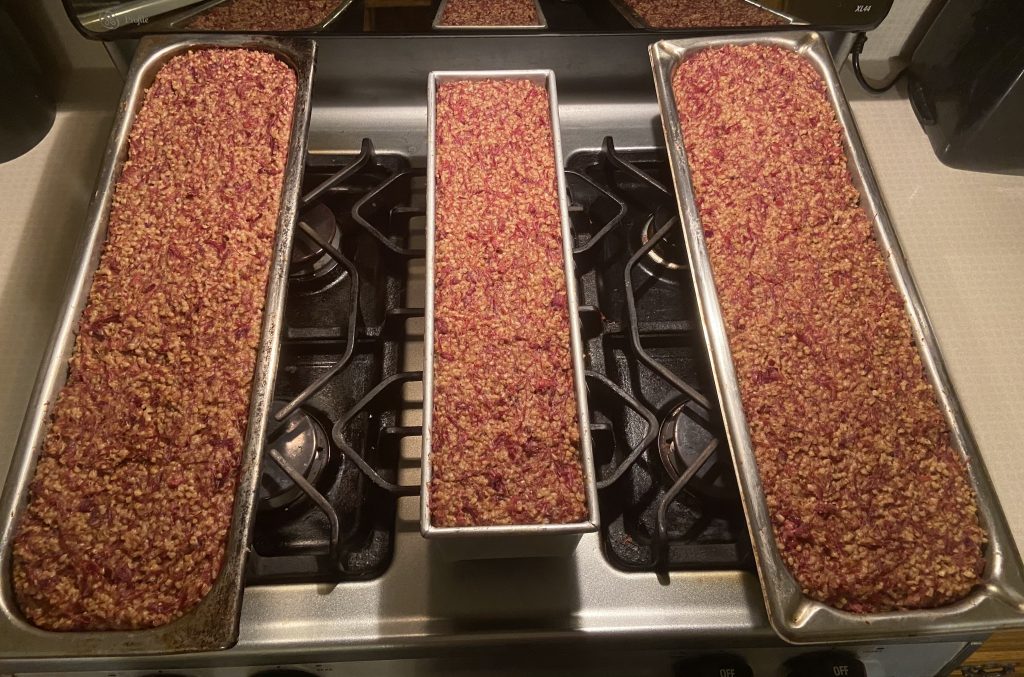
Panned fully-cooked cured P&B Goetta, starting to cool and then chill.
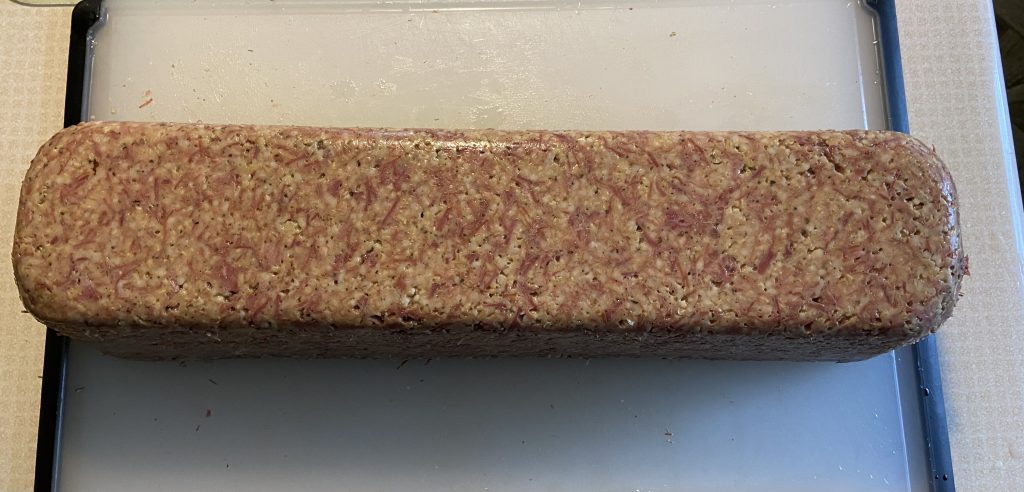
A Goetta loaf just released from the forming pan.
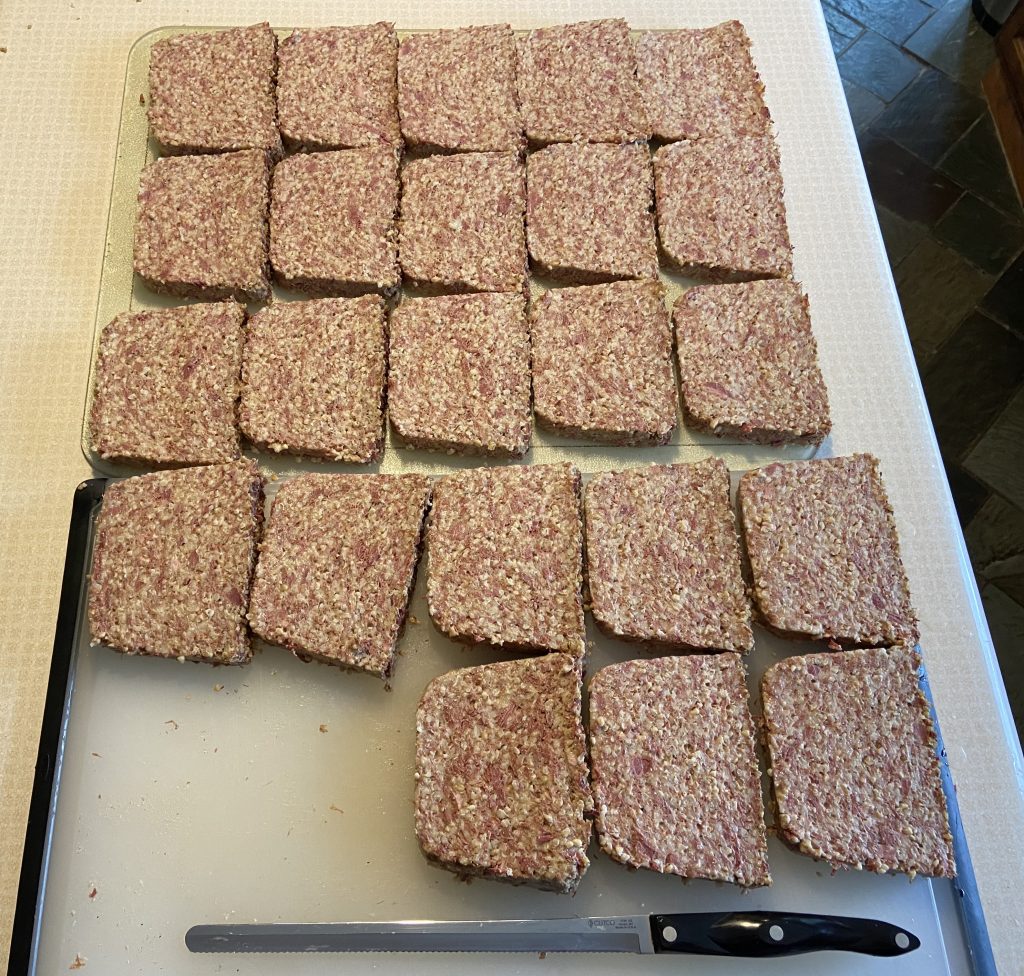
Sliced, cured P&B Goetta loaf.
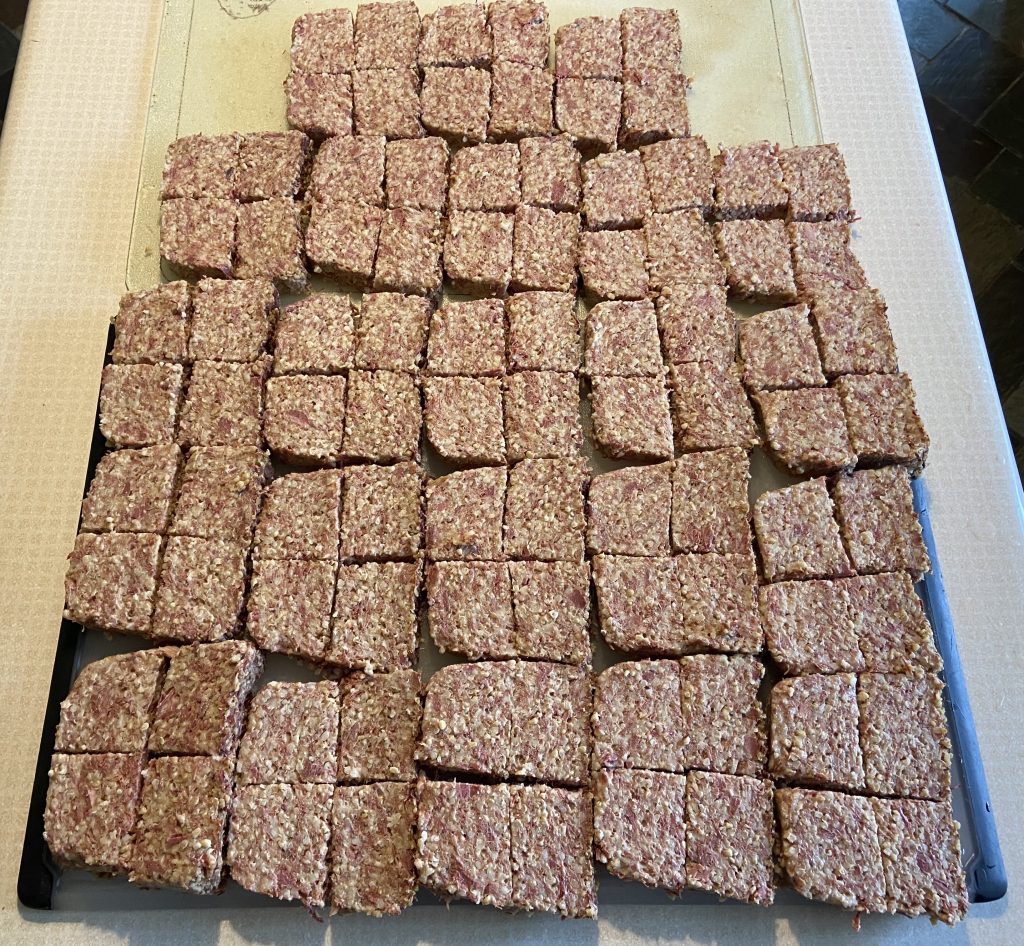
Goetta slices cut into quarters; for convenience packaging and freezer storage.
A kind of funny story: My son-in-law recently fried up some cured P&B Goetta for two of my granddaughters. He does not eat meat because he wants to help save the planet; so he was understandably somewhat inept in final Goetta preparation. Not knowing that Goetta is already fully cooked, he chopped up the patties with a spatula and fried the Goetta toughly; as one would make ground beef or sausage crumbles. Then the next time I saw my 5 year old granddaughter she immediately said: “I want you to make more bacon Goetta grandpa.” I didn’t know what she was talking about until a few days later when I heard the rest of the story from my daughter.
